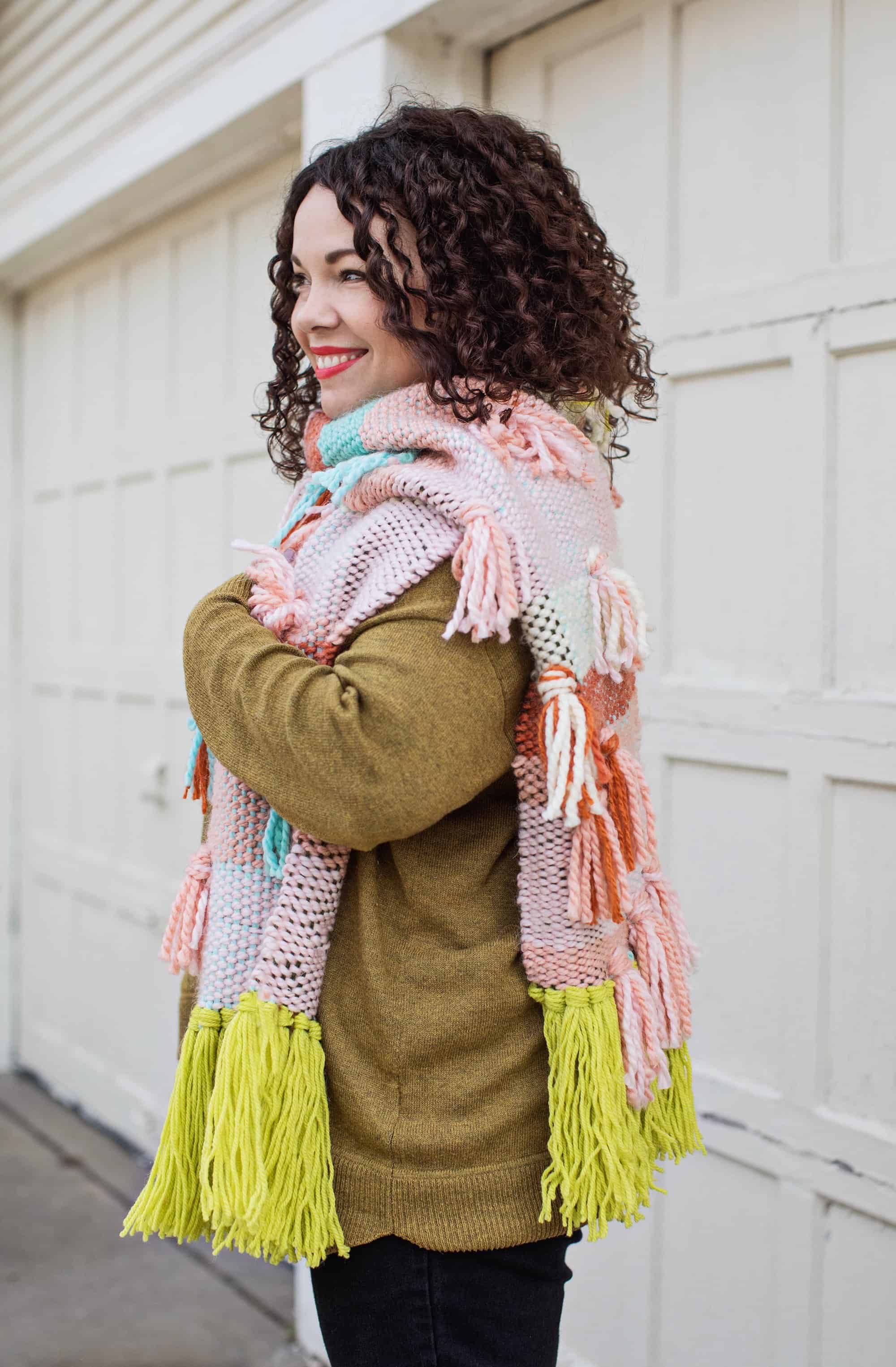
Start here: Weaving for Beginners
I tested out a few tartan color schemes before landing on a variety of fresh pastels, but this design would work just as well if woven with only neutral fibers. The key is to utilize yarns in similar weights for a smooth, wearable weave that will drape like a dream. Chunky yarns are perfect because they fill space quickly and allow the tartan pattern to show up. Plan your next yarn purchase ASAP because this is the perfect winter evening project!
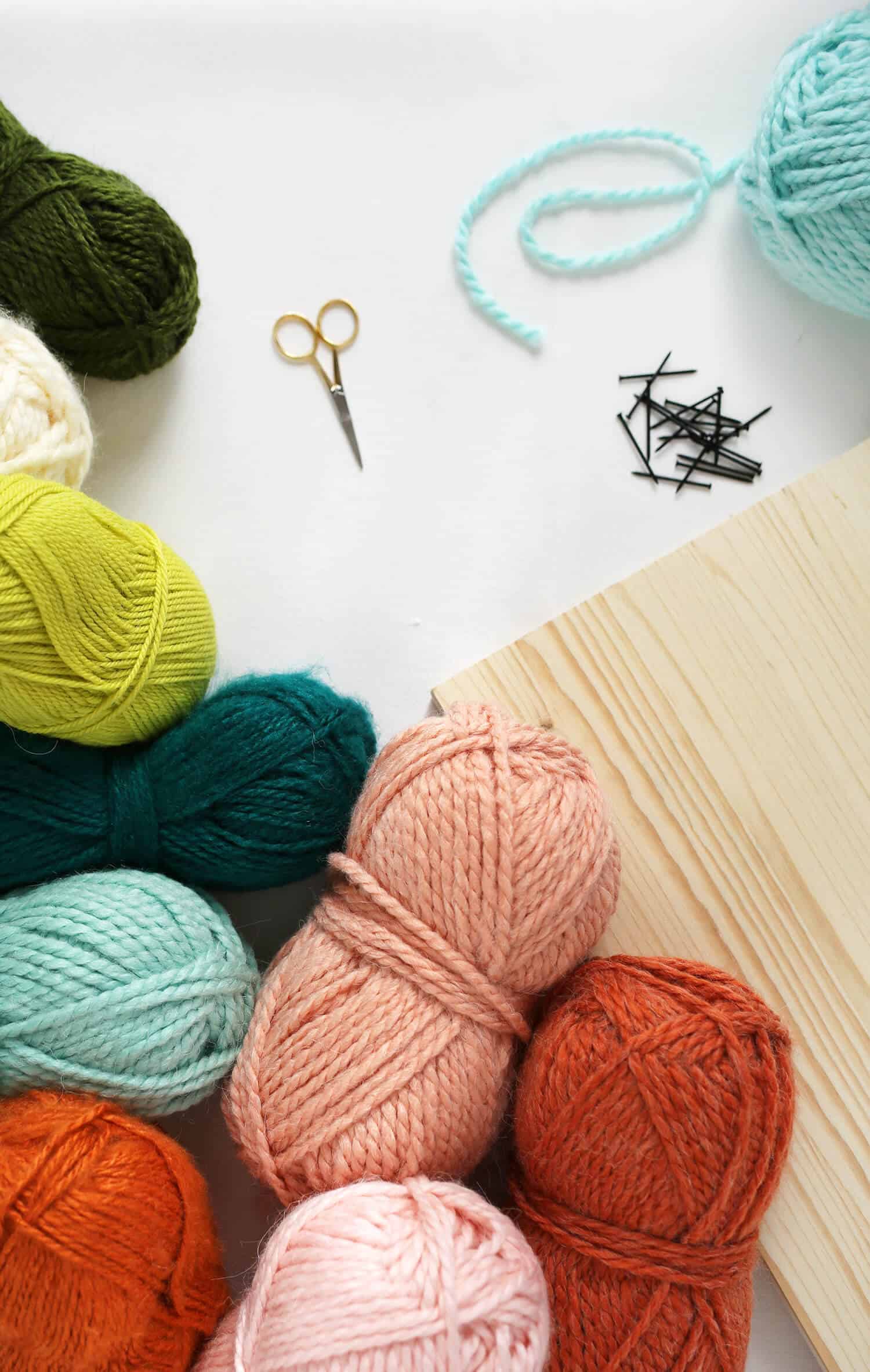
-one 1″ x 12″ x 6′ pine board (available pre-cut at large hardware stores)
-40 finishing nails (without wide heads)
-five to seven 100g skeins of chunky weight yarn (you’ll have leftovers)
-one 100 g skein of worsted weight (medium weight) yarn for the fringe on each end
-paint stick or weaving sword
-scissors

Step Two: Choose three contrasting yarn colors for your warp. Tie a loop knot with your first yarn and place it over the first nail on the top left side. Pull it gently down and wrap it around the first nail on the bottom left side and then back up to the second nail on the top left side. Continue warping your loom in this way for as wide as you’d like with that color.


Step Five: Cut in one place only and then separate your yarn into equal strands. Not enough fringe? Start wrapping again until you’ve cut enough. 
Place your loom on a table top or on the floor and start with the edge that has the looped knots where you started and finished your warp.
To create a rya knot, find the center of your first bunch of strands and place it on top of your loop knot. Wrap each side of the fringe around the outside of the loop knot and up through the center of the loop so that the two ends meet. Pull the ends up towards you so that they are mostly even. Smooth out the knot that it makes.
Step Seven: Move to the next nail and place the center of your bunch of strands on top of the two warp rows that loop around the nail. These are warp rows and a rya knot (your fringe) needs two warp rows to wrap around. Your loop knot acted as your two warp rows in step six. Wrap the two ends around the back of the warp rows and towards each other so that they come up through the center. Then gently pull the ends down and form a knot. 

Step Ten: Then gently remove it from your hand and wrap your loose end around the circle of yarn about five times, so that it creates a little bow or butterfly shape. This yarn and all of the other strands that travel through the vertical warp rows are called the weft row.

Step Twelve: Weave your paint stick over and under the same warp rows as the weft row you just wove through. You want these to match so that you can use your paint stick or weaving sword to separate the warp rows and create a shed for you to quickly pass your butterfly through. This only works in one direction, though. Now that your weaving sword is in place, you can slide it up about twelve inches to have it out of the way so that you can weave in the opposite direction. 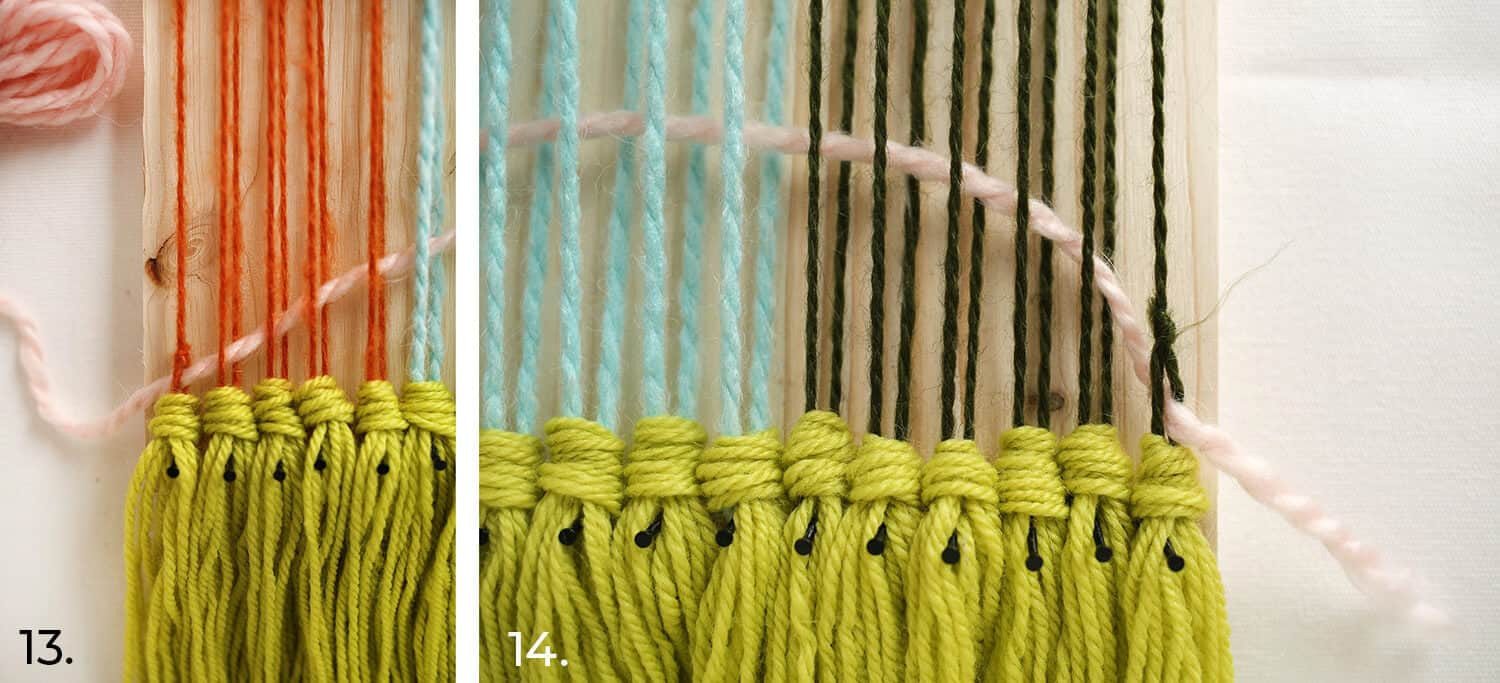
Step Fourteen: Be sure to always leave a three inch tail so that you have something long enough to tuck in later. 
Step Sixteen: Using your butterfly bundle, weave your second weft row by wrapping around the outer warp row and then weaving the opposite under and over pattern as the first weft row. Create that arch to avoid the hourglass effect and be sure to give your weft yarn just a little extra room on those edges. You won’t be able to use your weaving sword in this direction.
Step Seventeen: If you ever forget which direction your weaving sword works in, just pull it down to check. If it opens up space and your last weft row can move around, that’s the direction you want to use it. If it locks your last weft row in, that’s not the direction. You can also use your weaving sword to help even out your weft row as you bat it down to rest gently on top of the weft row underneath. With this chunky yarn, you should be able to see the contrasting patterns of your warp through your weft.
Step Eighteen: Raise your weaving sword for that third row and slide your butterfly right through that open shed. Continue weaving back and forth until you run out of yarn in your butterfly. 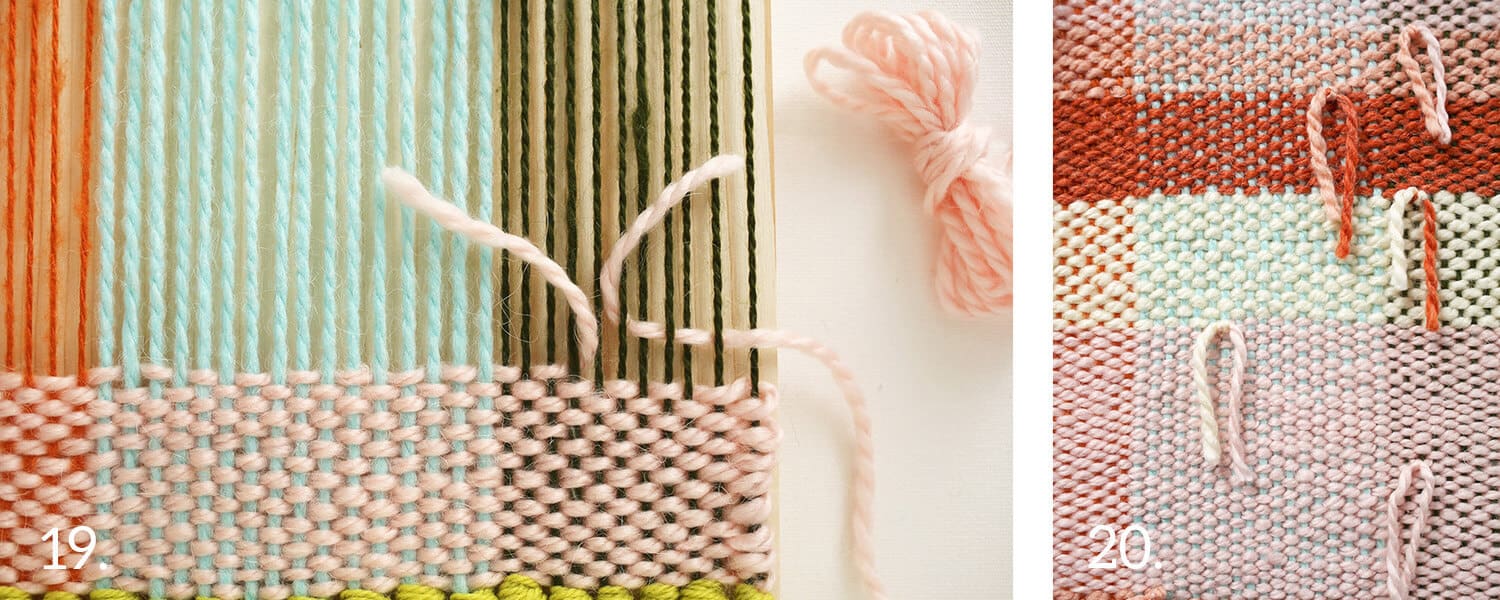
Step Twenty: These loose tails should be tied together to form a double knot. They’ll also be where you eventually add more tassels, so keep that in mind. Do you want all of your tassels to be on one side or spread out in groups of three? Alternate the height of your color blocks to keep the eye moving and be sure to step back every now and then to make sure you can see the bigger picture. 
Step Twenty-Two: Then pull the two ends up and through that loop as shown. 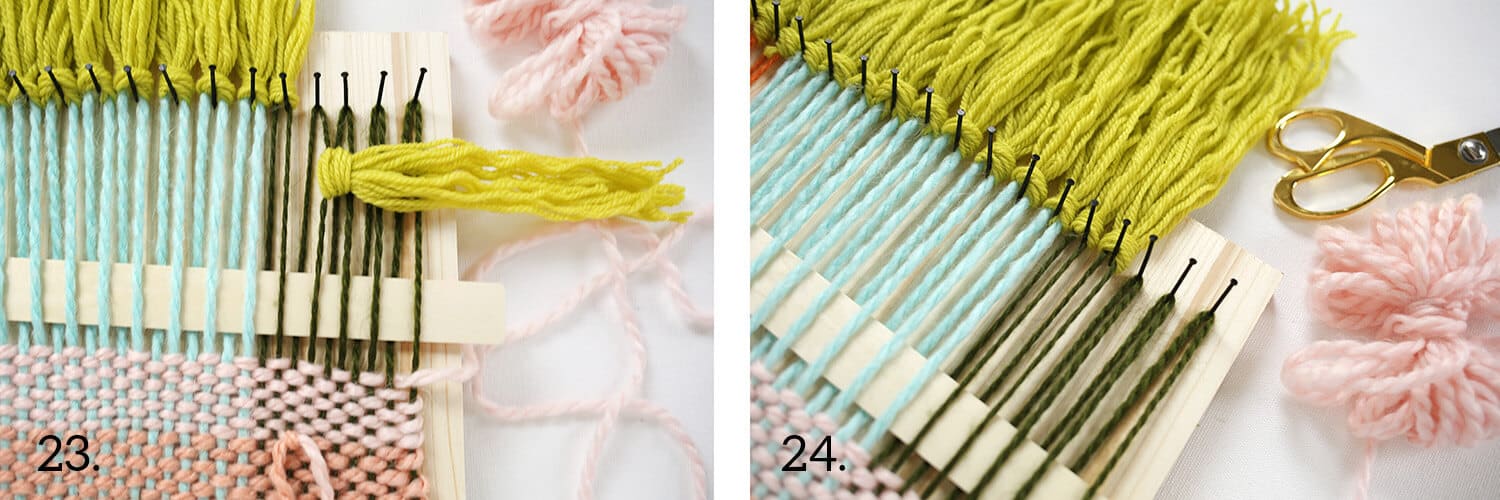
Step Twenty-Four: Then slide the knot down and pull it underneath (above) the nail head. 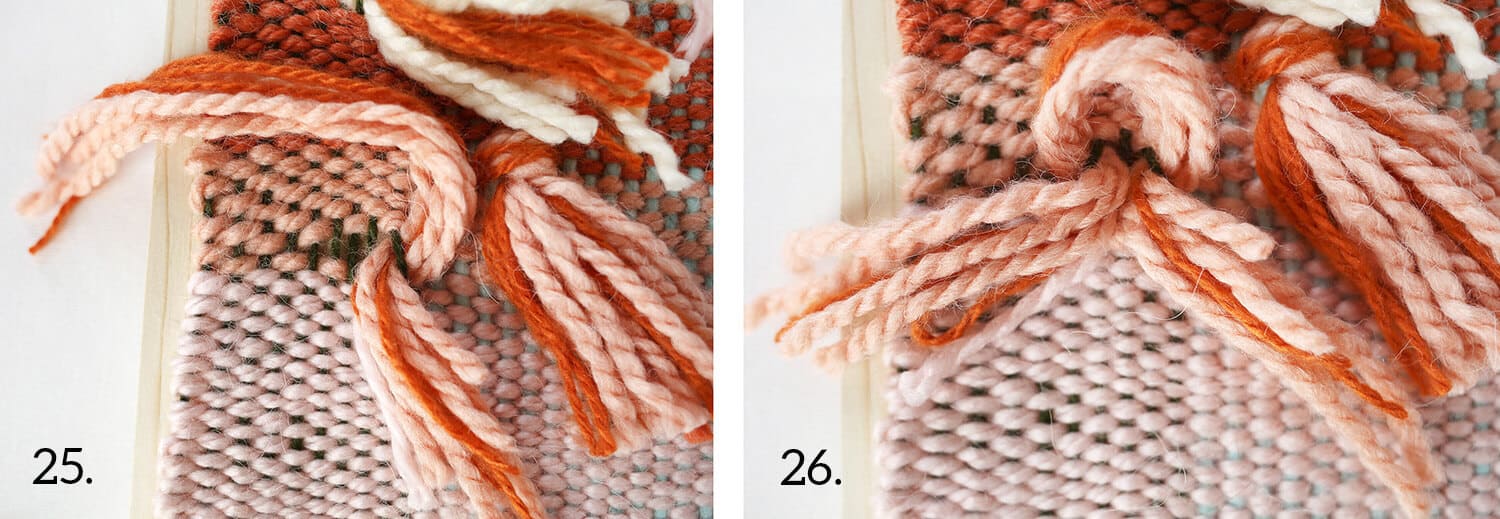
Step Twenty-Six: Then wrap the other end behind and around the warp row next to it. You can also skip a warp row, but not skipping makes for a cleaner back side.

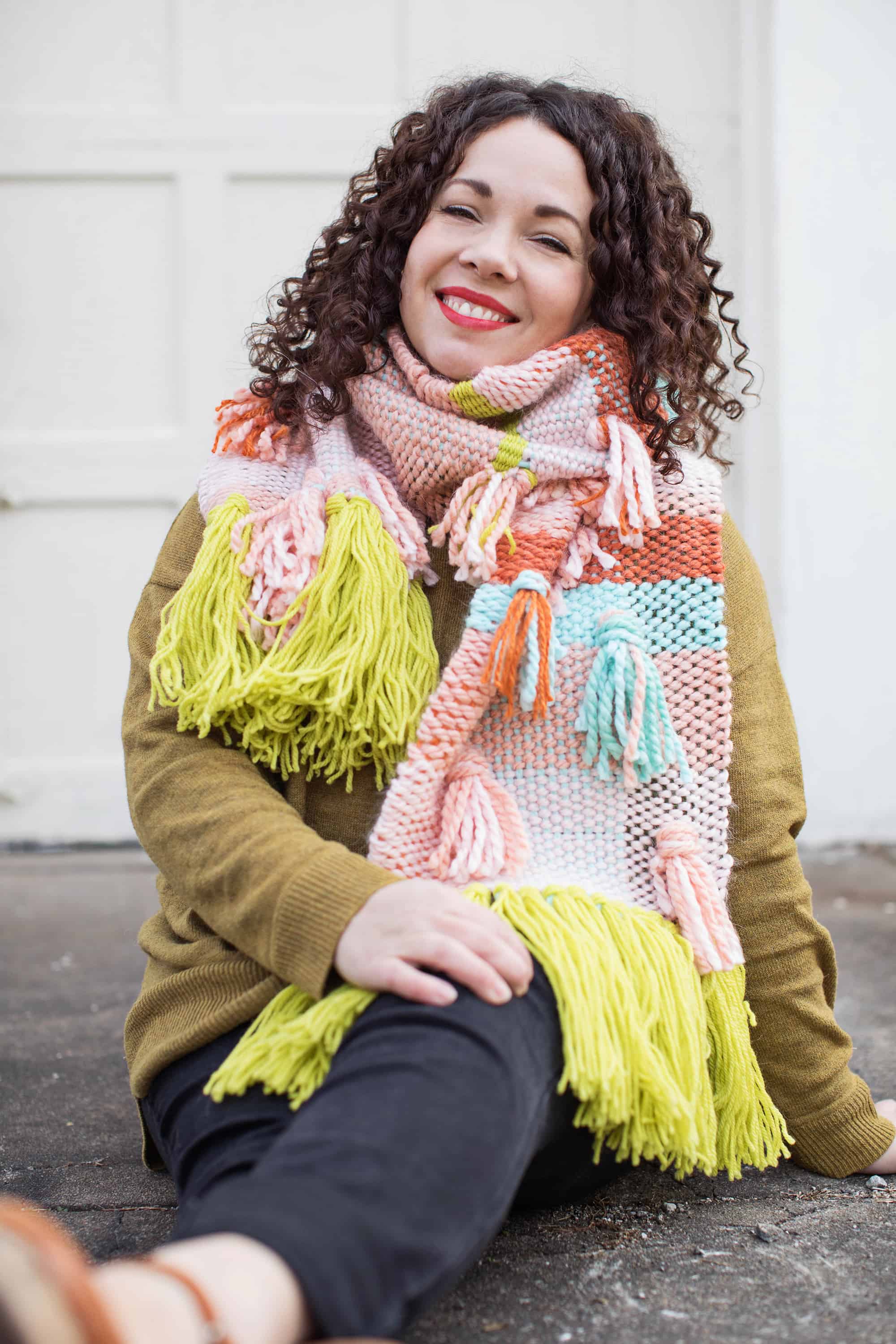

If you love the idea of weaving something wearable but don’t want to feel swallowed whole, create a loom that is narrower and adjust your colors accordingly. You can swap out the tassels for pom-poms or you can stitch the tail ends up through the weft rows to hide them and achieve a more minimalist look.
I am especially eager to see your finished woven scarves, so be sure to tag @abeautifulmess on Instagram. Stay cozy, friends! – Rachel
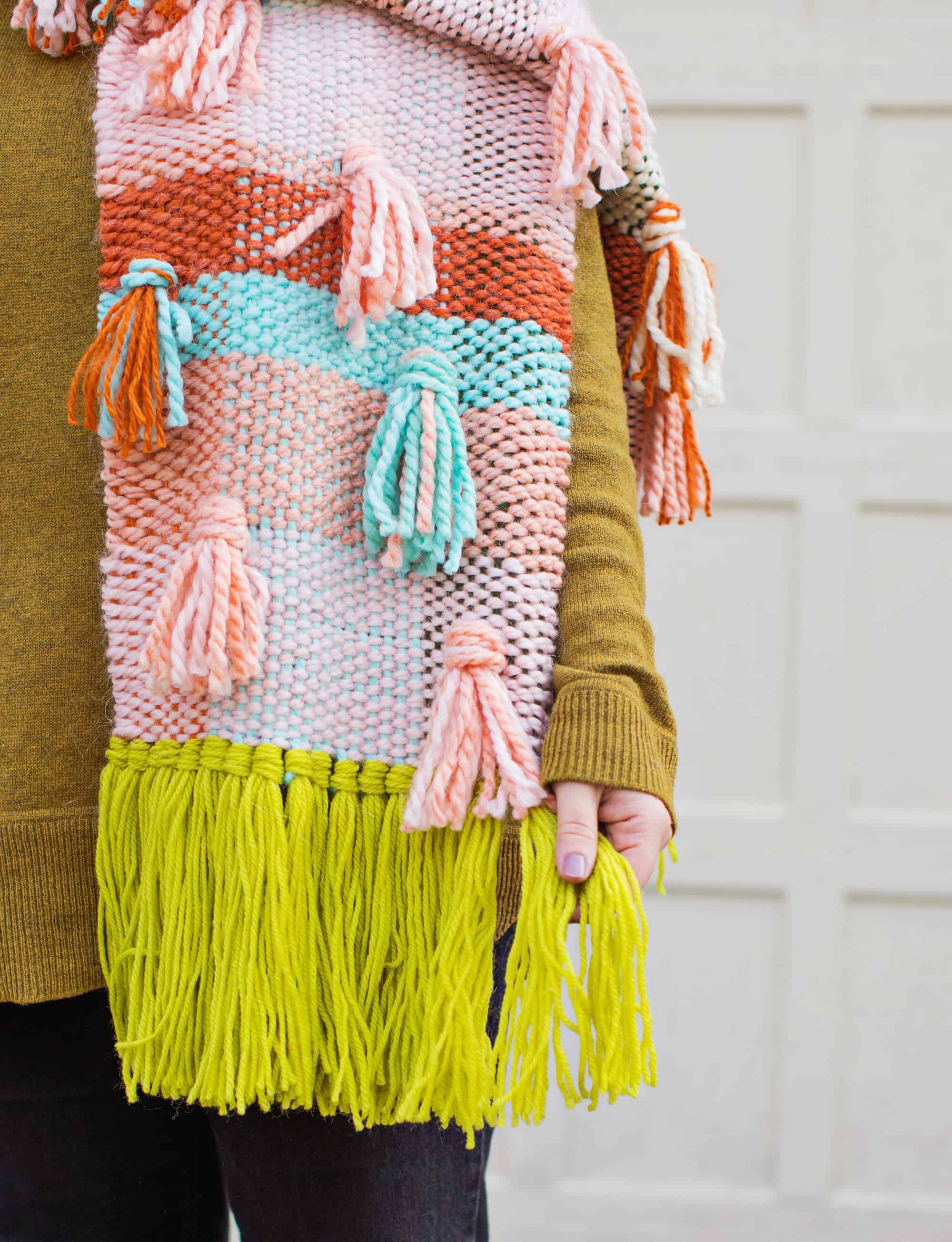
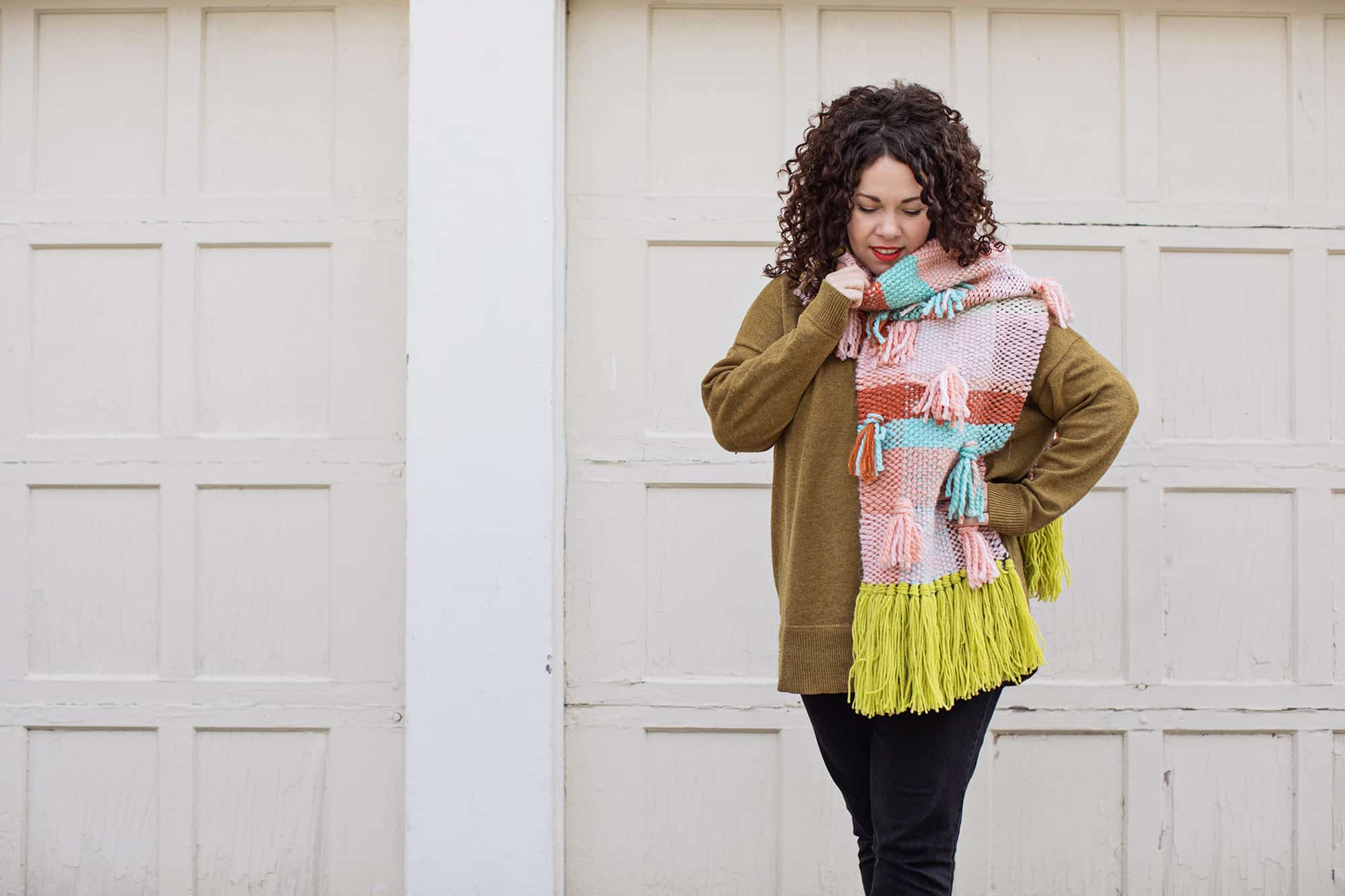
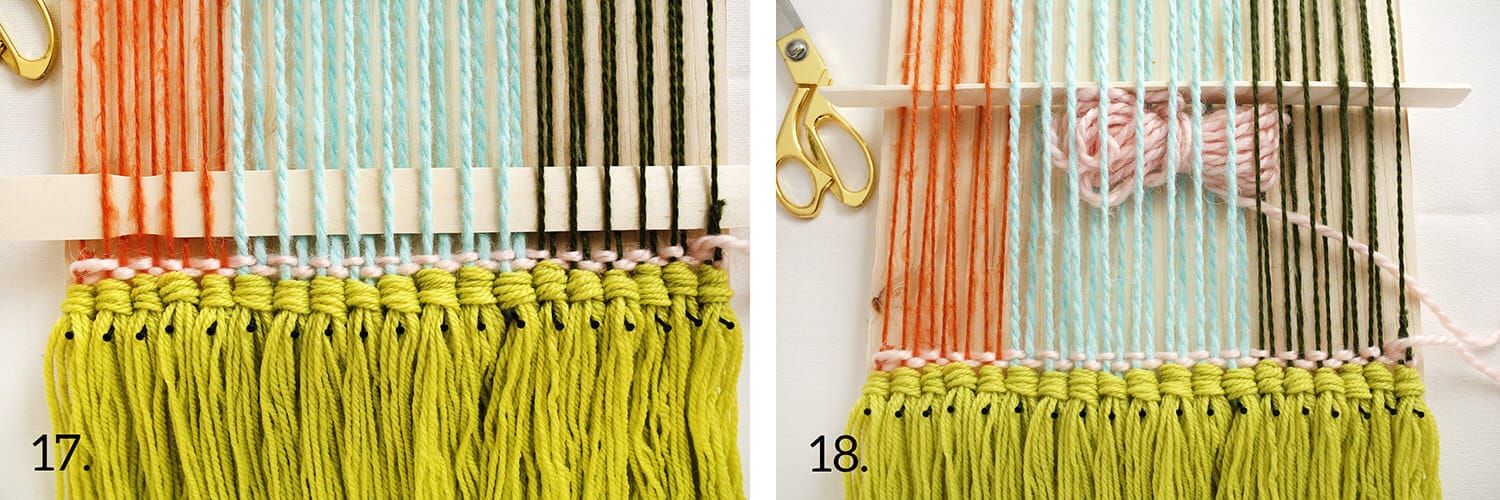

Thank you so much for this very thorough tutorial! Someone gave me a beautiful cherry wood loom. She no longer wanted it. But she lost the instructions. This should certainly work for a good substitute. I CANNOT wait to make something on it now!
Man, this is cool! I keep seeing neat woven wall hangings that just wouldn’t work for us (we live in Hawaii so the windows are always open and absolutely everything gets covered in dust and volcanic grime, which would ruin a woven wall hanging pretty quickly), but I love the bright, hand woven look. Thanks for creating a project that I could actually make and use!
Hooray! I was just thinking this project might not work for those that live in a warm climate but maybe it’s still necessary a few weeks out of the year-even in Hawaii! So glad you love it.
This is so cool! Such a fun idea, and I love the colours!! x
This scarf is adorable!
Paige
http://thehappyflammily.com
Magnificent scarf! I love the colorwork and the tassels! They add that extra touch of whimsy!
Wow, this is amazing! The colors together are beautiful and I love the texture the tassels give it.
Kayla | Charcoal + Silk
Kayla,
Tassels on everything!!!
Ooh, this is beautiful. I love the color scheme!!
Thanks, Ana!
A woven scarf is a great idea and with your instructions I should really be able to produce also such a wonderful scarf 🙂
xx from Bavaria/Germany, Rena
www.dressedwithsoul.com
Perfect for the freezing weather right now, too! The scarf would make a lovely gift for a girlfriend or a family member. Thanks for sharing! 🙂
Charmaine Ng | Architecture & Lifestyle Blog
http://charmainenyw.com